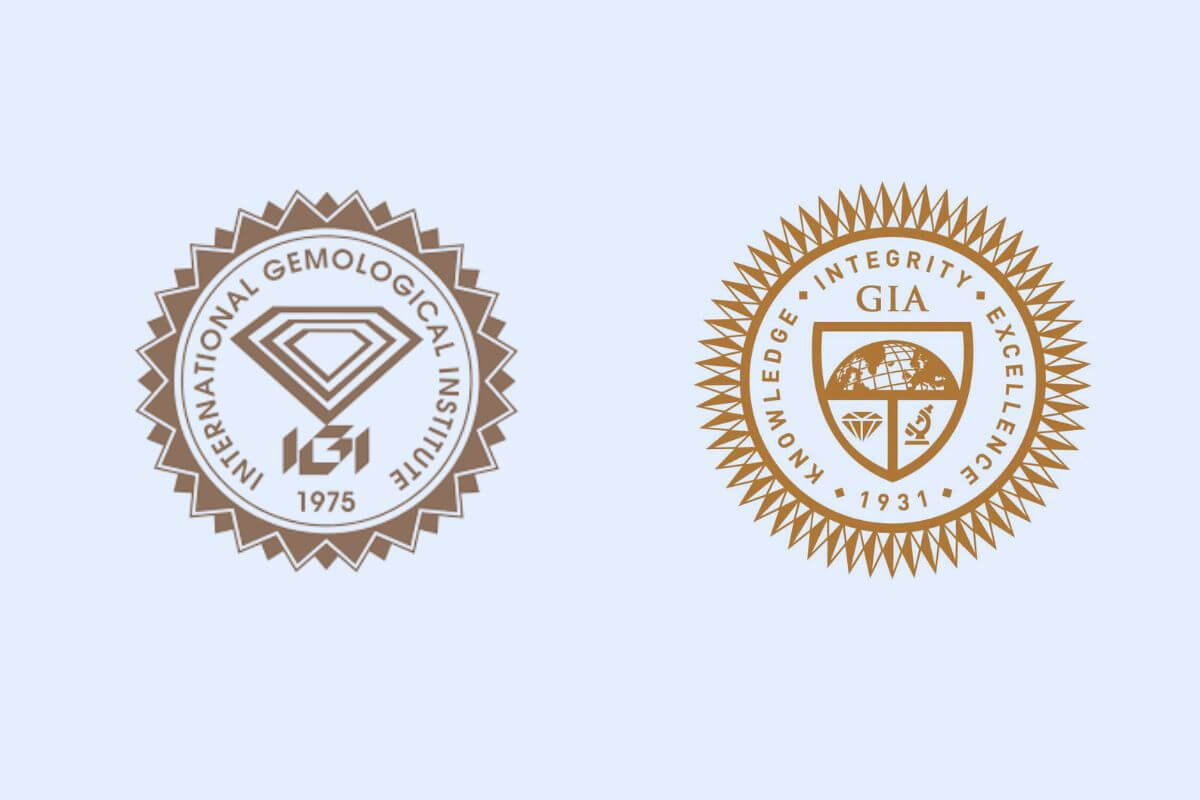When purchasing a diamond, especially when purchasing a lab-grown diamond, the sparkle or design is only secondary to the certification that comes with the gem. Certifications are your guarantee of quality as they detail your diamond's cut, color, clarity and carat weight. Two of the most identified gemological laboratories in the world are:
But what really differentiates them? And how do you pick the best one suited for your requirements? In this guide, we're going to go in-depth about the difference between IGI and GIA and how their certification impacts your diamond buying journey.
What Are IGI and GIA?
IGI, or International Gemological Institute, was founded in 1975 in Antwerp, Belgium. It is one of the largest gemological laboratories in the world. The Institute has been grading diamonds that are either naturally sourced or man-made diamonds for their quality. IGI is generally more business-friendly and popular among retailers, especially when it comes to lab-grown diamonds and jewelry.
GIA, or Gemological Institute of America, is an independent organization founded back in 1931 in California, USA. GIA has a phenomenal history of strict grading standards with objective grading. This is why it remains the most dependable name in the diamond industry for both natural as well as lab-grown diamonds.
How Are Diamonds graded?
Both IGI and GIA grade diamonds according to the internationally accepted 4 Cs:
- Cut: The shape and arrangement of the diamond.
- Clarity: Presence of inclusions and blemishes.
- Color: Level of colorlessness.
- Carat Weight: The size and weight of the diamond.
However, their grading process and standards are different, which may mean differences in the written report.
IGI vs. GIA: Key Differences
- Grading Standards
- GIA: More stringent and traditional grading, thus high precision and consistency.
- IGI: More lenient grading. It can hand out higher grades compared to GIA for the same diamond.
- Specialization
- GIA: Specializes in natural diamonds. GIA has maintained its prestige as the gold standard among traditional diamonds.
- IGI: Grades lab-grown and natural diamonds. it has the majority share in the market of lab-grown diamonds.
- Cost of Grading
- GIA: More expensive to grade, which may translate to more expensive dollars for the diamond.
- IGI: Grading is less expensive, which is suitable for budget-conscious buyers and may suit the needs of lab-grown diamond buyers.
- Speed of Turnaround
- GIA: Longer time due to their meticulous grading procedure.
- IGI: Faster and mainly used for selling the product.
- Report Availability
- GIA: Offers a more extensive and conservative report. Clients holding investment grade diamonds find them more trustworthy.
- IGI: Provides more detailed reports. It tends to be mostly favored for finished jewelry and is more available to the general consumer.
- Market Share in Laboratory-Grown Diamonds
- GIA: Started the laboratory-grown market later. The company holds less than half of the market share.
- IGI: It is the default certification for lab-grown diamonds because it is more affordable and widely adopted.
- Consumer Perception
- GIA: Most trusted and authoritative, in terms of high-value stones.
- IGI: Helping to build trust among consumers, especially in the growing market of laboratory-grown diamonds.
- Market Appeal
- GIA: Preferred by high-end retailers and auction houses for natural diamonds.
- IGI: Most mainstream jewelers and lab-grown diamond manufacturers prefer this due to their faster and cheaper certification.
What do jewelers and retailers prefer?
Most jewelers selling lab-grown diamonds prefer IGI for several reasons:
- Cost-effective for both jeweler and consumer.
- Faster certification processes.
- Gain more confidence of the customers at IGI, particularly in the market of lab-grown diamonds.
To natural diamonds, there's just a guarantee that top-end stores and auction houses are going to select GIA due to an unmatched reputation.
Which is better between IGI and GIA?
It depends on your priority and needs. For lab-grown diamonds, IGI is the winner. Detailed reports, market dominance and affordability make the choice practical for you. For natural diamonds, GIA is the gold standard for quality assurances and retention of market value.
In short, both IGI and GIA have their strengths. Neither is better across the board, but rather depends on a particular budget, the type of diamond being chosen (natural or lab-created), and consumer’s preferences. The most important thing, whether purchasing an IGI or GIA-certified diamond, is to buy from a reputable jeweler who stands behind his product.
If you want to consider a lab-grown diamond, then IGI will surely be your best value. And at Nivara, we are proud to provide IGI-certified lab-grown diamonds, bringing the best quality and assurance in each purchase.
Want to find your perfect diamond? Explore our collection today and experience the brilliance of ethically sourced, expertly crafted lab-grown diamonds!




Leave a comment